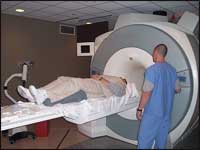NEW YORK (Reuters Health) – Adjuvant therapy with trastuzumab or exemestane has been shown to provide clinical benefits for women with breast cancer and now two reports appearing in the June 25th online issue of Cancer suggest each is cost-effective as well.
In the first study, Dr. Louis P. Garrison, from the University of Washington in Seattle, and colleagues used a Markov model to assess the cost-effectiveness of adding trastuzumab to chemotherapy for HER2-positive breast cancer. The cost utility was estimated for a hypothetical 50-year-old patient and was based on a meta-analysis of data from the NSABP B-31 and NCCTG N9831 trials.
The projected cost of trastuzumab therapy per quality-adjusted life year (QALY) gained was $26,417, the authors note. Adding this drug to chemotherapy increased life expectancy by an estimated 3 years and the discounted incremental lifetime cost was $44,923.
Over a 20-year horizon, adjuvant therapy with trastuzumab was projected to cost $34,201 per QALY gained, the authors note. The main factors influencing cost were the discount rate, trastuzumab price, and the odds of metastasis.
"Trastuzumab for the adjuvant treatment of early stage breast cancer is projected to be cost effective over a lifetime horizon, achieving a cost-effectiveness ratio below that of many widely accepted oncology treatments," the authors state.
The second study, conducted by Dr. Nicole Mittmann, from Sunnybrook Health Sciences Centre in Toronto, and colleagues, focused on the cost-effectiveness of either continuing tamoxifen therapy or switching to the aromatase inhibitor exemestane as adjuvant therapy for breast cancer in postmenopausal women.
Data from the Intergroup Exemestane Study (IES) was incorporated into a Markov model, which looked at the benefits of using tamoxifen for 2.5 years and then continuing with the drug or switching to exemestane for 2.5 more years.
Switching to exemestane rather than continuing with tamoxifen yielded a 2.6% absolute improvement in disease-free survival. The incremental cost-effectiveness ratios of this strategy were $28,119 (Canadian) per life-years gained and $24,185 per QALY gained. The risk of distant recurrence had the strongest impact on the cost analysis.
Switching to exemestane after 2.5 years of tamoxifen therapy appears to be cost effective, the authors conclude. "This study reinforces the recent recommendations in Canada to fund the sequential use of tamoxifen/exemestane as a standard of care for postmenopausal women with ER-positive breast cancer or breast cancer of unknown ER status."




